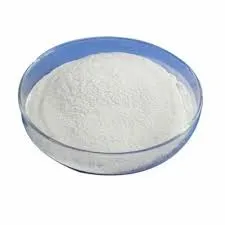
nóv . 19, 2024 22:05 Back to list
hpmc vs hec
HPMC vs. HEC A Comprehensive Comparison
Hydroxypropyl Methylcellulose (HPMC) and Hydroxyethyl Cellulose (HEC) are two widely used water-soluble polymers in various industries, including pharmaceuticals, food, cosmetics, and construction. While they share some common properties due to their cellulose origins, they exhibit distinct characteristics and functionalities that make them suitable for different applications. This article aims to compare HPMC and HEC, highlighting their differences, advantages, and typical uses.
Composition and Properties
HPMC is derived from the cellulose obtained from wood pulp or cotton fibers through a series of chemical processes. The hydroxypropyl and methoxy groups introduced into the cellulose backbone provide HPMC with its unique properties. It is known for its superior film-forming abilities, adhesive qualities, and thickening properties. HPMC can be tailored to have varying degrees of substitution, which influences its viscosity and solubility.
On the other hand, HEC is produced by the etherification of cellulose with ethylene oxide. The introduction of hydroxyethyl groups gives HEC its unique characteristics, such as good water retention and excellent thickening capabilities. HEC generally has a higher solubility in cold water compared to HPMC, making it ideal in applications where ease of use is crucial.
Viscosity and Thickening Ability
One of the most significant differences between HPMC and HEC lies in their viscosity profiles. HPMC can achieve a broad range of viscosities depending on the degree of substitution and concentration. It is particularly valued in pharmaceutical formulations where controlled viscosity is critical for the drug delivery process. The viscosity of HPMC remains stable across a wide pH range, making it suitable for various formulations, including oral, topical, and ophthalmic products.
hpmc vs hec

Conversely, HEC tends to have a limited viscosity range but offers advantageous flow properties. It's commonly used as a thickener in paints, inks, and personal care products, where its ability to enhance the texture and stability of formulations is highly beneficial. HEC is also known for its temperature stability, allowing it to maintain viscosity under varying environmental conditions.
Applications
The applications of HPMC are extensive, particularly within the pharmaceutical domain. It is widely used in controlled-release formulations, acting as a matrix-forming agent that regulates drug release rates. Additionally, HPMC is a common excipient in tablet formulations, providing binding and film-coating properties.
In the food industry, HPMC serves as a thickener, emulsifier, and stabilizer. Its ability to form gels and films is particularly useful in low-fat food products, where it can improve texture and mouthfeel while reducing caloric content.
HEC, in contrast, has a strong presence in the cosmetic and personal care industry. It is commonly found in hair care products, lotions, and creams due to its excellent moisture retention and thickening properties. Moreover, HEC is heavily utilized in the paint industry, where it is valued for its ability to improve the flow and application characteristics of water-based formulations.
Conclusion
While HPMC and HEC share similarities as cellulose derivatives, their distinct properties, such as viscosity profiles and solubility characteristics, lead to different applications across various industries. HPMC's versatility and film-forming capabilities make it a preferred choice in pharmaceuticals and food production, whereas HEC's excellent thickening abilities and water retention make it a staple in cosmetics and paints. Understanding these differences allows formulators to select the appropriate polymer for their specific needs, ensuring optimal performance and functionality in their products.
-
Versatile Hpmc Uses in Different Industries
NewsJun.19,2025
-
Redispersible Powder's Role in Enhancing Durability of Construction Products
NewsJun.19,2025
-
Hydroxyethyl Cellulose Applications Driving Green Industrial Processes
NewsJun.19,2025
-
Exploring Different Redispersible Polymer Powder
NewsJun.19,2025
-
Choosing the Right Mortar Bonding Agent
NewsJun.19,2025
-
Applications and Significance of China Hpmc in Modern Industries
NewsJun.19,2025







